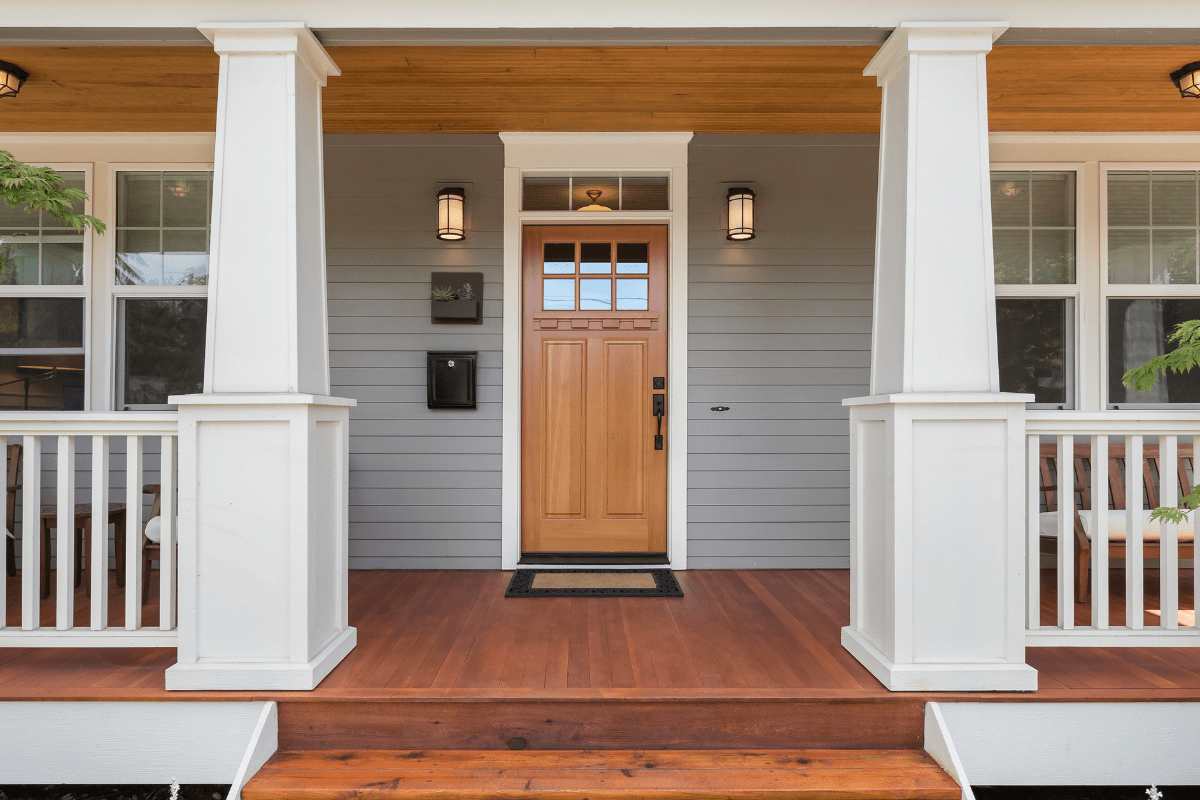If you've ever watched your tomatoes literally cook on the vine during a 115-degree afternoon, only to find them frozen solid three days later, welcome to gardening in Oklahoma. This state doesn't just have weather… it has ALL the weather, sometimes in the same week.
But here's the thing: thousands of us successfully grow everything from prize-winning pumpkins to perfect peppers despite Mother Nature's mood swings.
Understanding Oklahoma's wild weather personality
Oklahoma holds the dubious honor of being America's most unpredictable weather state, and honestly, that feels like an understatement some days.
The numbers that make gardeners cry
Let me paint you a picture with some truly bonkers statistics. We average 57 tornadoes annually, though 2024 decided to show off with 152. Our temperature swings are legendary… on February 20, 2018, Oklahoma City experienced a 21.4°F drop in 4 minutes. That's not a typo. Four. Minutes.
But wait, there's more! Our rainfall varies from a measly 17 inches out west to 56 inches in the southeast. It's like having Arizona and Louisiana as roommates who can't agree on the thermostat.
The state spans USDA zones 6a through 8a, though the 2023 update bumped most of southern Oklahoma from 7b to 8a. Translation: we can grow more heat-loving plants now, but don't pack away those frost blankets just yet.
When weather attacks
Every Oklahoma gardener has war stories. Mine involves the October 2020 ice storm that left 300,000 people without power and my Japanese maple looking like a twisted ice sculpture. Then there was 2011's heat wave with 43 consecutive days above 100°F. Even my supposedly indestructible okra was begging for mercy.
The trick is understanding our patterns. May brings peak rainfall (yay!), followed by drought in July and August (boo!). Western Oklahoma sees measurable precipitation only 45 days annually, while eastern areas get 115 days. It's why your cousin in Tulsa brags about her hostas while you're in OKC wondering if cacti need supplemental watering.
Conquering our notorious clay soil
Ah, Oklahoma clay. It's like gardening in modeling clay that turns to concrete when dry and peanut butter when wet.
The dirt on our dirt
Here's what the soil tests reveal: half of Oklahoma's soil has a pH below 6.3, with 16% showing production-limiting acidity below 5.5. That's science-speak for "your tomatoes are gonna struggle."
The good news? Clay soil holds nutrients like a champion once you civilize it. The bad news? Getting it civilized costs money and effort. But trust me, it's worth every penny and drop of sweat.
For new garden beds, work 2-4 inches of compost into the top 8-12 inches of soil. That's about 4 cubic yards per 1,000 square feet, which sounds like a lot because it is a lot. Your back will hate you, but your plants will worship you.
The amendment game plan
Here's my tried-and-true soil improvement strategy:
- Never add sand (creates concrete)
- Compost annually (1-2 inches minimum)
- Apply gypsum (40 pounds per 1,000 sq ft)
- Test before guessing ($10 at OSU)
- Consider cover crops (clover works magic)
Landscape architect Connie Scothorn recommends planting cover crops like clover to naturally improve clay soil. It's cheaper than hauling in amendments and gives you that smug organic gardener feeling.
Total cost for initial soil improvement runs $200-350 per 1,000 square feet. Yes, that's real money. But consider it an investment in not wanting to throw your trowel across the yard in frustration every spring.
Choosing plants that actually want to live here
Plant selection separates the perpetually frustrated from the successfully smug Oklahoma gardeners.
Heat-loving heroes
The Oklahoma Proven program has done the hard work of finding plants that laugh in the face of our weather. For tomatoes, 'Arkansas Traveler' resists cracking when temperatures yo-yo, while 'Early Girl' keeps producing when it's 105°F and you've given up on life. 'Homestead 24' was literally developed for hell's kitchen climates like ours.
Native plants are your secret weapons. Oklahoma redbud tolerates both drought and -20°F, which is basically a superpower. Purple coneflower attracts butterflies while surviving everything nature throws at it. Our state wildflower, blanket flower, blooms continuously despite heat that would make Phoenix jealous.
The drought-defying lineup
When choosing plants, think "tough as nails" first, "pretty" second. Though honestly, many drought-tolerant plants are gorgeous:
- Trees: Bur oak, Eastern red cedar
- Shrubs: Flame acanthus, Turk's cap
- Perennials: Black-eyed Susan, Mexican hat
- Grasses: Pink muhly, Switchgrass
- Vegetables: Okra, Armenian cucumber, cherry tomatoes
Local blogger Dee Nash swears by okra, peppers, and eggplant as the easiest vegetables for Oklahoma. She's been gardening here since her teens, so when Dee talks, I listen.
Timing is everything (and everything is weird here)
Forget what the seed packets say about "plant after last frost." In Oklahoma, last frost is more of a suggestion than a date.
Spring's trust issues
Cool-season crops need 40°F soil temperature, which happens between February 15 and March 10 for most of us. Southeast Oklahoma gets a 1-2 week head start because apparently they made a deal with the weather gods.
Warm-season crops want 50°F soil, typically April 10-30. But here's the thing… we get false springs. Like that time in 1911 when temps dropped from 83°F to 17°F in 11 hours. So yeah, keep those row covers handy.
Fall: Oklahoma's gardening gift
Fall gardening is where Oklahoma actually plays nice. The mid-July timing trick for fresh tomato transplants gives you fruit through first frost. Plant these babies when everyone else has given up:
- Mid-July: Tomato transplants
- Mid-August: Broccoli and cabbage
- September: Lettuce and spinach
- Early October: Garlic for next summer
Water wisdom for the drought-prone
Water management in Oklahoma is like budgeting with a wildly variable income… you need a solid plan and some backup strategies.
Smart irrigation choices
Drip irrigation systems reduce water use by 50-60% compared to sprinklers. They're not cheap upfront, but neither is replacing dead plants every summer. Plus, plants actually prefer the consistent moisture drip systems provide.
Deep, infrequent watering beats daily sprinkles every time. Water once or twice weekly, encouraging roots to dive deep where soil stays moist longer. Morning watering reduces evaporation and fungal issues, though during heat waves, your plants won't judge you for a midday rescue mission.
Rainwater harvesting: Free water falling from the sky
Here's a mind-blowing fact: a 1,500 square foot roof yields 1,944 gallons from just 2.4 inches of rain. That's a lot of free irrigation! Oklahoma doesn't require permits for non-potable use, so harvest away.
A basic 2,200-gallon system runs about $9,000 installed, which sounds steep until you calculate water bills during drought years. DIY systems cost much less if you're handy and don't mind your neighbors thinking you're preparing for the apocalypse.
Mulch: Your garden's security blanket
Mulch reduces evaporation by up to 70% while keeping soil temperatures stable. Apply it like this:
- Trees and shrubs: 3-4 inches
- Flower beds: 2-3 inches
- Vegetable gardens: 4-8 inches straw
Annual mulch costs run $50-100 per 1,000 square feet, making it the best bang for your water-conservation buck. Plus, it makes your garden look tidy, which is basically the gardening equivalent of making your bed.
Finding your gardening tribe
Oklahoma gardeners are generous with knowledge, probably because we've all killed the same plants in the same spectacular ways.
OSU Extension: Your new best friend
David Hillock, OSU's Senior Consumer Horticulture Specialist, writes a weekly column that's saved more gardens than I can count. The Extension service offers over 1,500 fact sheets on everything from tomato diseases to lawn care. And get this… it's all free.
The Master Gardener program requires 60 hours of initial training, which sounds intense until you realize you'll finally understand why your azaleas keep dying (spoiler: wrong soil pH). These volunteers staff help desks and demonstration gardens, dispensing wisdom earned through collective centuries of Oklahoma gardening experience.
Local voices of experience
Dee Nash's Red Dirt Ramblings blog reads like gardening advice from your wisest, funniest neighbor. Linda Vater proves you can have an English-style garden in Oklahoma City, though she probably doesn't mention the irrigation system that makes it possible.
Seasonal survival strategies
Success means adapting your approach as wildly as the weather changes.
Summer: Embrace the heat
Western Oklahoma typically sees 30-40 days above 100°F, so summer gardening is basically an extreme sport. Shade cloth becomes your best friend, morning watering is non-negotiable, and you learn to love heat-thrivers like okra and Armenian cucumbers.
Pro tip: When other tomatoes shut down, cherry varieties keep trucking. They're the energizer bunnies of the tomato world.
Winter: Preparing for ice apocalypse
After first hard freeze, apply 3-4 inches of mulch to insulate perennial roots. The December 2007 ice storm taught us that proper pruning prevents catastrophic damage. Remove weak branches before ice turns them into projectiles.
Skip late-season fertilizing… it encourages tender growth that ice storms love to destroy. Think of it as not feeding the enemy.
The bottom line for Oklahoma gardeners
Gardening here requires equal parts knowledge, stubbornness, and humor. Yes, the initial soil improvement might cost $350 per 1,000 square feet. Sure, you'll need to water strategically and choose plants tougher than a two-dollar steak. Absolutely, you'll have moments when you question your sanity as you cover tomatoes during a May freeze warning.
But here's what they don't tell you: Oklahoma gardeners are some of the most successful anywhere precisely because of our challenges. We can't phone it in. We can't just stick something in the ground and expect it to thrive. We earn every tomato, celebrate every bloom, and build gardens tough enough to survive anything.
The secret isn't fighting Oklahoma's nature… it's embracing it. Work with the clay soil by adding organic matter annually. Choose plants that laugh at drought and temperature swings. Harvest rainwater, mulch everything, and make friends with your local Extension office.
Most importantly, remember that every Oklahoma gardener has killed plants in spectacular fashion. The successful ones just kept planting. So grab your heat-resistant gloves and your sense of humor, because gardening in Oklahoma isn't just a hobby… it's an adventure. And honestly? Once you taste a tomato that survived 115-degree heat and a surprise hailstorm, you'll understand why we wouldn't garden anywhere else.





